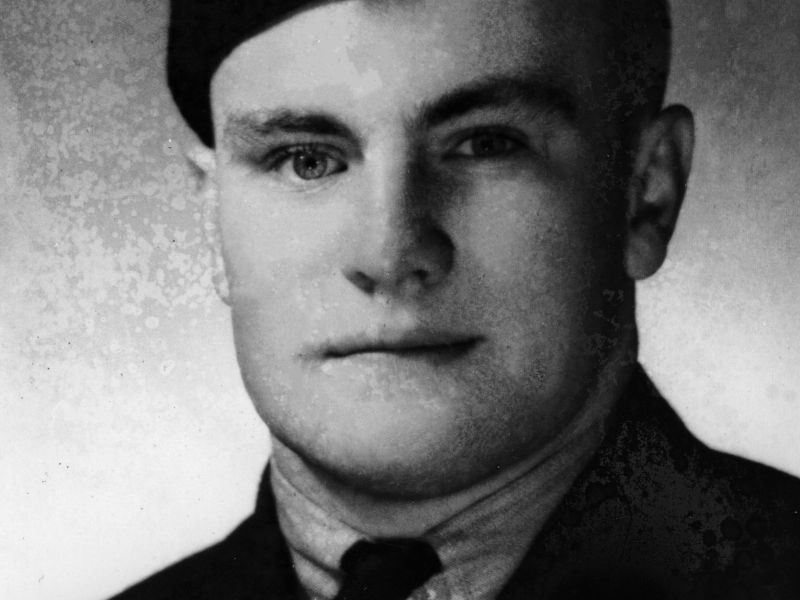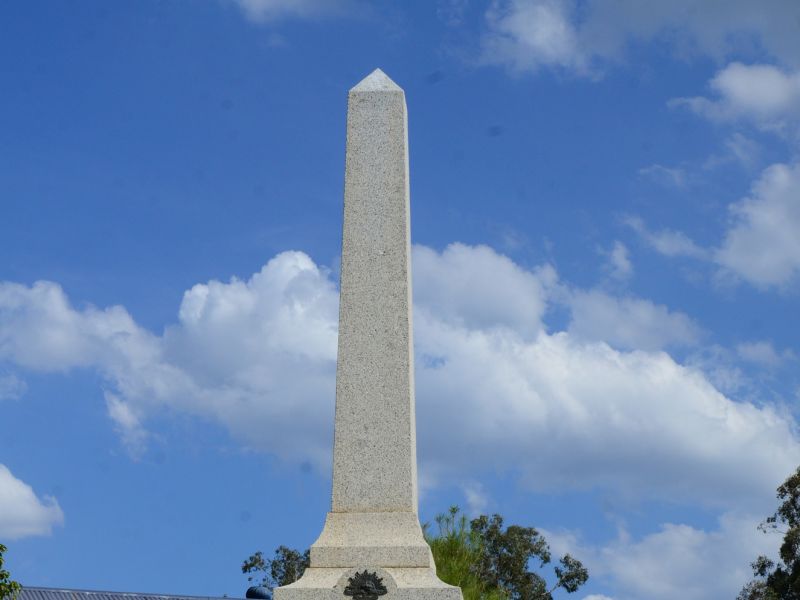Thomas (Jock) John Greenhill
Thomas Greenhill was born on the 9th of April 1924 at Corryong, Victoria. His father, John Dickson Greenhill had also been born in Corryong, while his mother, Olive Christina Gibson, had been born in Omeo, Victoria. Thomas’ paternal grandfather, also Thomas, was a renowned builder and undertaker in the Corryong District. He was famous for the construction of such local buildings as the grandstands at the Racecourse and Sporting ground and St Andrew’s Presbyterian Church, which is now the Uniting Church.
Thomas’ father, John, also had a story to tell. Having moved from Corryong to Melbourne, John made his debut for Carlton in the Victorian Football League during the 1916 season. After a break due to military service, he rejoined the club for the 1920 VFL season playing 13 games in a Carlton team that made it to the Preliminary Final. The following year he played 19 matches, playing in the Blues team that lost the 1921 VFL Grand Final to Richmond. He also represented Victoria at the 1921 Perth Carnival. John enlisted with the Australian Imperial Force in April 1917 and left Melbourne on the HMAT Port Sydney in November 1917. He was attached to the 8th Field Artillery Brigade as a gunner. He returned to Australia in July 1919. Two of his brothers also served, William and Robert, both in the 13th Light Horse Regiment.
John, like his son, also enlisted in the RAAF in World War 2 in 1942. He served as a carpenter-rigger with No. 1 Mobile Works Squadron in Darwin and training bases in Victoria.
Thomas originally enlisted in the Army at Beechworth on the 6th of May 1942 and was given the Service Number V159081. However, on the 4th of December of that year he was discharged. The very next day he enlisted in the RAAF at Melbourne and was allocated the Service Number 430099. After enlisting, Thomas would have been sent to the No.1 Initial Training School based at Somers on the Mornington Peninsula in Victoria for a period of 12 weeks. Some of the topics that he would have studied included; mathematics, navigation, law and administration, signals, medical, physical training, science, armament, gas defence and hygiene. During this time the recruits were sorted into the different roles that they would take in the airforce. Thomas was allocated to become a navigator. His path would include 12 weeks spent at an Air Observers School, followed by 8 weeks at a Bombing and Gunnery school, then finally another four weeks spent at an Air Navigation School. After this he would have passed out as a navigator and then sent overseas to England.
Thomas joined the 17th Operational Training Group, at the Satellite airfield RAF Turweston in Buckinghamshire. Wellington BK352 took off from RAF Turweston at 0055 hours on the night of the 17th of March 1944, detailed to carry out night circuit training. The aircraft overshot and crashed at 0105 hours, coming down near Brackley airfield, Winchester, and caught fire. Six of the crew members were killed. The crew members of BK352 were:
Flight Sergeant Ernest William Baldwin (419948) (Wireless Air Gunner)
Flight Sergeant Peter John Calder (417799) (Second Pilot)
Pilot Officer Roy Dennis DFM (162836) (RAFVR) (Pilot)
Sergeant Thomas John Greenhill (430099) (Navigator)
Flight Sergeant Donald Stephen Robinson (1061047) (RAFVR) (Wireless Air Gunner)
Sergeant Douglas George Small (423551) (Air Gunner) Injured
Sergeant John James Owen Walters (1652405) (RAFVR) (Air Bomber)
The six crew members that died in the crash were buried at the RAF Regional Cemetery at Oxford (Botley), UK.
The survivor, rear gunner trainee Sergeant Douglas Small (423551) described the event at the Court of Enquiry:
“We had completed 4 or 5 landings when the captain decided that we had to carry out an overshoot. This we completed with no problem and then I heard Plt.Off. Dennis shout over the intercom “Throttle”. Almost immediately the aircraft stalled to port and I think that we were about 1000 ft above the aerodrome. There was no steep dive and the aircraft seemed to be under control again with increased power having been applied to the engines. Very shortly afterwards the aircraft stalled to starboard and I noticed increased juddering in my turret.
The aircraft then seemed to flick up onto its tail and the then nose went straight down. Then the aircraft started turning very steeply to port and these turns were very tight. I could see the ground at 180 degrees and when flying level I would normal see about 90 degrees - at about this time Plt.Off. Dennis called out over the intercom “bale out”. I was unable to do this as I couldn’t unlock the doors to get to my parachute. There was no fire in the aircraft at this stage.
It is not know if Sgt. Small did bale out, or he escaped from the aircraft after it had crashed. On impact it is known to have caught fire.”
Thomas is remembered on the International Bomber Command Memorial, the Australian War Memorial Roll of Honour, the Corryong War Memorial, and the Corryong Scout Hall. For his service, he was awarded the Defence Medal, the War Medal 1939-1945 and the Australian Service Medal 1939-1945.

 Stephen Learmonth
Stephen Learmonth